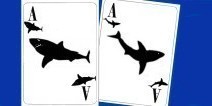|

Join our Newsletter
& get our free guide Starting Hands Revealed
We hate spam too!
We value your privacy and never share your email. All our emails have an opt-out link. Click it, and you will never hear from us again. |
Restealing
Restealing is a play which you should look to incorporate in to your poker arsenal as it will significantly improve your win rate. Not only is restealing useful in cash games, but when used effectively in tournaments it will add a lot more chips to your stack, and every chip counts. If you are not familiar with the strategy, restealing is simply the process of being able to identify a stealing attempt, and then re-raising the initial stealer. This re-raise or 3 bet is referred to as restealing in poker, and if you are not using it regularly when you are playing, you are missing out on a lot of opportunities and your timid play in the blinds will allow aggressive players to steal your blinds relentlessly. ABC of Blind restealing in Texas Hold'emRestealing is applicable to both cash games and tournaments, but it is really important when playing 6 max online cash games, since the blinds come around at a quicker rate, and so stealing attempts will occur more frequently. There are a number of factors a player must take into consideration when considering to make use of the restealing play in poker. Firstly, you want to target the right opponent. Restealing becomes a profitable play when your 3bet gets respect and the pre-flop raiser will fold to your show of strength. You count on the original raiser folding to the 3bet a lot. If the initial raiser decides to call the re-raise then the resteal obviously didnít work, and you are required to play post flop to take down the pot. Resteal Against The Right OpponentsSo an important stat in your poker HUD you want to analyse is the fold to 3bet stat. If you suspect a player is trying to steal the blinds and they have a high fold to 3bet %, they would be a good candidate to try a resteal play on, since in all likelihood they will fold to your restealing attempt, because they will only like to play back at you when they have a premium hand, which isnít going to be very often. Secondly, you want to target players who you suspect are stealing the blinds with a high frequency. The HUD stat you want to look at is the ATS (attempt to steal %). If the ATS of a player is on the higher side, it means they are open raising a lot more hands in late position (CO/BTN). If a player is raising a wider range of hands in late position, its impossible for them to always have a hand, so restealing makes a lot of sense. Itís important to consider your table image when thinking about restealing in poker. The play will work a lot more often when you have a tight image at the table, because your 3bets will get a lot more respect. If you have been playing a LAG style and 3betting a lot, then you are much more likely to get called even when your opponents donít have a premium hand, because the other players will suspect you are 3betting light, and since they have position in the hand, they gain an advantage post flop. So restealing in moderation is optimal. Hands To Be Restealing WithIf the conditions stated above in the article have been met, and a player is stealing with a high frequency and folding to 3bets a lot, then what hands you resteal with really isnít that important, because restealing will get folds a large majority of the time. Restealing is similar to bluffing or semi-bluffing so the cards really are not that important. In saying that, it can be better to try restealing with hands which have more potential post flop such as suited connectors and suited aces, because on the odd chance that you do get called, you have more ways to win the hand. In the toughest rooms such as PokerStars and Full Tilt, the regular sharks have made it an art to steal the blinds as much as possible, up to frequencies of 30-40%. In less travelled rooms such as Carbon Poker, players are less aware of this strategy and you can use it to exert pressure and instill fear with an aggressive image. |









